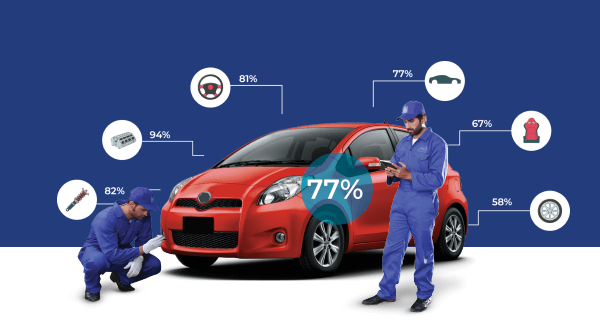Table of Contents
What is a Motor Vehicle Inspection?
A motor vehicle inspection is a comprehensive examination of a vehicle’s condition, typically conducted by a certified mechanic or inspector, to ensure it is safe to operate on the road and complies with local laws and regulations. These inspections vary in scope depending on the jurisdiction, the type of vehicle, and the purpose of the inspection.
In many countries and regions, truth in24.com/ are required periodically, such as annually or biennially. The inspections aim to catch potential problems early before they lead to accidents, costly repairs, or environmental damage.
Why Are Motor Vehicle Inspections Important?
-
Road Safety
Ensuring vehicles are in safe working condition is crucial to reducing the risk of accidents. An inspection checks critical systems such as brakes, tires, lighting, and suspension to verify that the vehicle is safe for both the driver and others on the road. -
Environmental Protection
Inspections help in controlling emissions by ensuring vehicles meet environmental standards. This is especially important for reducing air pollution and minimizing the impact of vehicle emissions on the environment. -
Legal Compliance
Many regions require vehicles to pass an inspection before they can be legally driven. Failing an inspection may result in fines, registration issues, or even the inability to drive the vehicle until the necessary repairs are made. -
Preventive Maintenance
Inspections help identify wear and tear on vital components, preventing costly breakdowns and extending the lifespan of your vehicle. Early detection of issues can save you from expensive repairs down the road. -
Resale Value
A well-maintained, inspected vehicle holds a better resale value. Prospective buyers are more likely to trust a car with a documented history of passing regular inspections, making it easier to sell.
Types of Motor Vehicle Inspections
Motor vehicle inspections come in various forms, depending on the jurisdiction and the vehicle’s requirements. Some of the most common types include:
-
Safety Inspections
Safety inspections focus on ensuring that a vehicle’s essential systems and components are functioning correctly. These inspections often include checks on:- Brakes
- Tires
- Steering and suspension
- Lights (headlights, brake lights, turn signals)
- Windshield wipers and washers
- Seatbelts and airbags
- Exhaust system
-
Emissions Inspections
Emissions inspections are designed to measure a vehicle’s emission levels and ensure they meet local environmental standards. These inspections are common in areas with stricter environmental regulations, and failing to pass could mean that a vehicle is not eligible for registration or must undergo repairs to reduce its emissions. -
Comprehensive Inspections
Comprehensive inspections may be required for specific types of vehicles, such as commercial trucks, buses, or vehicles that are more than a certain age. These inspections assess both the safety and environmental status of a vehicle and may involve more detailed testing of engine performance, fuel efficiency, and structural integrity. -
Pre-Purchase Inspections
A pre-purchase inspection is conducted before buying a used vehicle to evaluate its overall condition. This inspection helps potential buyers make an informed decision and can identify any issues that could affect the vehicle’s safety or value. -
Inspection for Registration or Renewal
In many places, a vehicle must pass an inspection before it can be registered or re-registered. The inspection ensures that the car meets all necessary legal standards and is roadworthy before it’s allowed back on the road after being off the road or after an extended period.
How Motor Vehicle Inspections Work
The process of a motor vehicle inspection can vary slightly depending on where you are, but generally, it follows these steps:
-
Schedule an Appointment
In most cases, you’ll need to make an appointment at a licensed inspection station. Many jurisdictions allow vehicle owners to visit state-run or private inspection facilities. Some areas may even have mobile inspection units. -
Vehicle Drop-Off
When you arrive at the inspection station, you’ll drop off your vehicle for an inspection. Be sure to have all necessary documents, such as proof of registration, insurance, and any prior inspection reports, if applicable. -
Inspection Process
The inspector will conduct a thorough examination of your vehicle based on the type of inspection required. This may take anywhere from 30 minutes to a couple of hours, depending on the inspection’s scope. -
Pass or Fail
After completing the inspection, the inspector will issue a report. If your vehicle passes, you may be given a certification or a sticker indicating that the vehicle is roadworthy for the time period required. If your vehicle fails, the report will outline what needs to be repaired to pass the inspection. -
Repair and Re-inspection
If your vehicle fails an inspection, you’ll need to have the necessary repairs done and schedule a re-inspection to verify that the issues were resolved. In some areas, you may be allowed to drive the car to the repair shop without re-inspection, but you’ll need to return for verification before the car can be legally driven again.
Common Reasons for Failing an Inspection
Here are some common reasons vehicles fail motor vehicle inspections:
- Brakes: Worn-out brake pads or non-functioning brake lights.
- Tires: Bald or worn tires that fail to meet legal tread depth standards.
- Lighting: Faulty headlights, turn signals, brake lights, or taillights.
- Exhaust System: Leaks, damaged mufflers, or emissions-related issues.
- Suspension: Worn-out shocks or struts that affect the vehicle’s stability.
- Windshield: Cracks or chips that impair the driver’s view.
Motor Vehicle Inspection Costs
The cost of a motor vehicle inspection varies depending on where you live and the type of inspection required. In general, standard safety inspections may cost between $20 and $50. Emissions inspections may have a separate fee, often ranging from $10 to $30. More comprehensive inspections or inspections for commercial vehicles can be more expensive.
How to Prepare for a Motor Vehicle Inspection
To ensure that your vehicle passes its inspection and avoids unnecessary delays, here are a few preparation tips:
- Check the Tires: Make sure your tires are properly inflated and have adequate tread depth.
- Test the Lights: Verify that all lights on your vehicle (headlights, brake lights, turn signals) are functioning properly.
- Check the Fluid Levels: Ensure that the engine oil, coolant, and windshield wiper fluids are topped off.
- Inspect the Brakes: If you notice any unusual noises or reduced braking performance, get your brakes checked before the inspection.
- Look for Leaks: Check for any oil, coolant, or other fluid leaks under the vehicle.
Conclusion
Motor vehicle inspections are essential for ensuring that vehicles are safe, environmentally friendly, and compliant with local regulations. Regular inspections help protect drivers and passengers, prevent costly breakdowns, and maintain the value of your vehicle. Whether you’re preparing for your first inspection or managing a fleet of vehicles, understanding the process and staying proactive with maintenance can make the experience smooth and stress-free.




